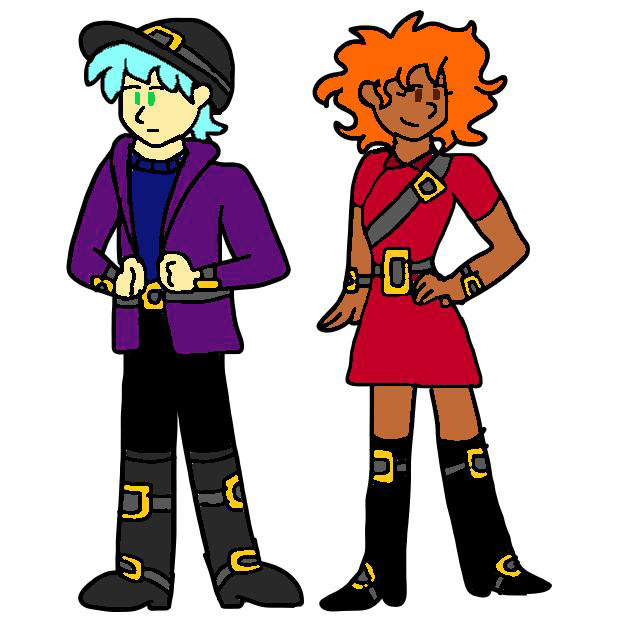Modern Fashion: Should Belt and Buckle Fashion Make a Comeback?
December 16, 2022
Fashion is an ever-evolving and often perplexing field, reaching from simple screen-printed t-shirts to pieces from flamboyant fashion shows by high-end designers, and everything in between. There are the classic and the timeless (jeans, sneakers, hoodies, baseball caps), the types of clothing that are as popular (if not more so) than they were upon their first debut, and then there are the types of clothing that are iconic for their momentary popularity: bell-bottoms, skinny ties, fedoras, the symbols of their era. Styles often come and go, never truly dead, just dismissed by modern society. This poses the question: what, or who, dictates what is or isn’t in style? It seems to be that new trends in fashion are the result of popular individuals wearing a type of clothing consistently enough that it becomes associated with the lifestyle of the person that is wearing it. Clothing is more than simply what one wears; rather, it is a reflection of how the wearer wants to be seen, and what statement they are trying to make with the image they create. This is more than a matter of what looks fashionable to the wearer, but one of what culture, what affiliation, what group or ideology, virtue, outlook, and/or attitude one wants to visibly project as a piece of their identity in a given setting.
However, the mixing of two different, seemingly incompatible elements of fashion has proved to work in the past. Case in point: the buckle hat. The buckle hat is often — and, to a degree, improperly — associated with pilgrims and the early days of European settlements on the Eastern coast of the United States. This tall, narrow, brimmed hat is known as a capotain, and was indeed popular in the 1600s. However, according to the History of Massachusetts Blog, the addition of a buckle onto the hat is thought to have only come about through Victorian-Era artistic renditions of those who wore them. Despite never truly being incorporated during the time period, the concept of a buckle-adorned capotain upon a pilgrim quickly spread throughout Europe and North America (historyofmassachusetts.org). While initially the idea of a such a hat seems unfashionable, the truth of the matter is that the buckle adds depth and dimension to an otherwise bland outfit that lacks any other immediately defining factors, providing for the use of multiple types of materials, colors, and shapes onto an initially simplistic and unremarkable garment.
The added elements of design that the belt and buckle possess allow for a focal point (area of most interest) to be established on and around the headwear. Focal points are the result of the eye being drawn to areas of the most contrast. This contrast can be created in several different ways, some of which are a difference in brightness, shape, size, visible texture, color, and through overlapping shapes, according to Brigham Young University (byui.edu). This focal point is what helps to bring out the additional elements of a design, and allow it to stand out from its competition. Shifting the focal point to a piece of headgear naturally draws the primary element of an outfit, the item being used to express their identity. The style benefits that a buckled piece of headgear would add to an outfit is supported by Senior Matt Pham, “I am going to be honest, a buckle snapback flatbill hat would look sick.” Should a similar approach be used upon far more modern and in-style headwear, the result would send a shockwave through what society considers to be stylish today.
This realm of thought follows the fundamental ideas of Social Learning Theory (SLT) originating from Albert Bandura and R.H. Walters’ 1977 publication of the same title. SLT is a theory that states that people learn new things and develop new behaviors by observing other people. More specifically, SLT claims that people rely on symbols that serve as tangible signs of current status and past success (scholarcommons.sc.edu). Therefore, if style has to do with image and affiliation, and image has to do with general predispositions shared within or throughout a society, does this mean that the only thing holding people back from creating a new style, bringing back an old one, or making a combination of the two is the concern that other people may see a design with confusion?
With its style being undoubtedly distinct, unique, and standing out from other accessories, while still having the option to maintain a low profile, the possibilities for the application of this concept are constrained solely by one’s creativity. The belt and buckle provide a medium for which to mix and match combinations of a vast selection of colors, textures, patterns, and materials, along with the flexibility to scale up or down the accessory to whatever may be desired by the wearer. In time, a modern adaptation of the buckle hat shall very well come into its own.


